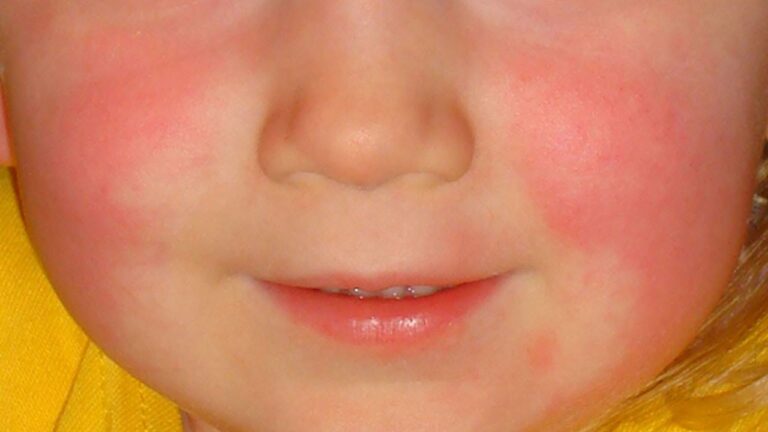What is it all about to get a rash on the face? Get insight into conditions, infections that cause a rash on the face in children and adults, symptom and general information about them. Find a discussion on a baby rash on face and rash on the neck is in separate posts.
Identifying them with picture
A rash on the face can be an eruption on the skin surface presented in various forms. It can change the texture or appearance of normal and healthy skin. It can look red or purplish or appear bumpy, flat or scaly or flaky. You can also identify a rash as signs or symptoms of another condition. For instance, itching or dry skin or formation of cracks in the skin. Sometimes it may be difficult to identify it on the skin without signs.
Depending on the cause, you can get an outbreak of rash on the face only or have a widespread effect. Certain factors like sensitivity, sexuality (being female or male) affirm to the general idea that the level of occurrence varies different kinds of rashes..
Common facial rashes in children and adults – causes
The following are some of the common facial rashes in children and adults.
1. Facial eczema
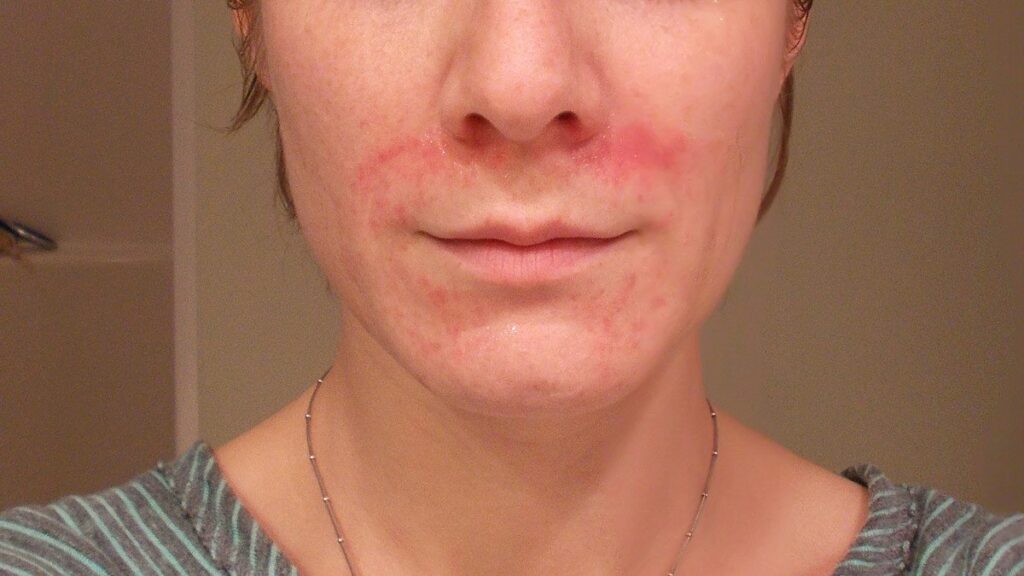
Eczema is a very common condition in various forms. Medical term dermatitis is usually used in preference to name various forms of eczema that affect the skin. These include:
Allergic contact dermatitis
This form of eczema is mostly due to allergic reactions produced when your face comes in contact (directly or indirectly) with certain substances like fragrance, preservatives in facial products, lipstick, balms and Nickel. These are just a few examples.
The above things can produce varied effects on the skin. The reactions can develop over time but some could occur a few hours after contact with skin. The affected areas include the eyelids or skin around eyes, the lips, and mouth including the corners.
Contact dermatitis of the eyelids and lips is marked by redness on upper or lower eyelids, the skin around eyes or virtually to the surrounding parts. Itching or itchy face and scaling can result.
Irritant contact dermatitis
Irritants are the most common culprits for infants, babies, and adults. This type of dermatitis is usually marked by skin irritation confined to the specific area that came into contact with the offending agent.
Irritant contact dermatitis is a non-specific response of the skin to direct chemical damage that releases mediators of inflammation.
The hands, mouth, and lips are common areas for irritant contact dermatitis. Look at the pictures for detail on appearance.
2. Heat rash on face

What is a heat rash? Also known as “prickly” rash, it is due to clogged sweat pores. It is common for babies worn in too warm clothes. If your child sweats too much and the sweat cannot get out as it is supposed, you will notice little bumps in skin folds. These eruptions will also be visible on the forehead, on neck and forearms.
The occurrence of heat rash is higher during summer when the weather is hot and humid. Some adults who sweat too much get a “sweat rash”.
They do not require treatment. It should clear on its own with simple remedies like exposing your child to a cool shade or open space. However, avoid applying oils and lotions likely to heighten itching.
3. Infections like scabies, chickenpox and slapped cheek syndrome
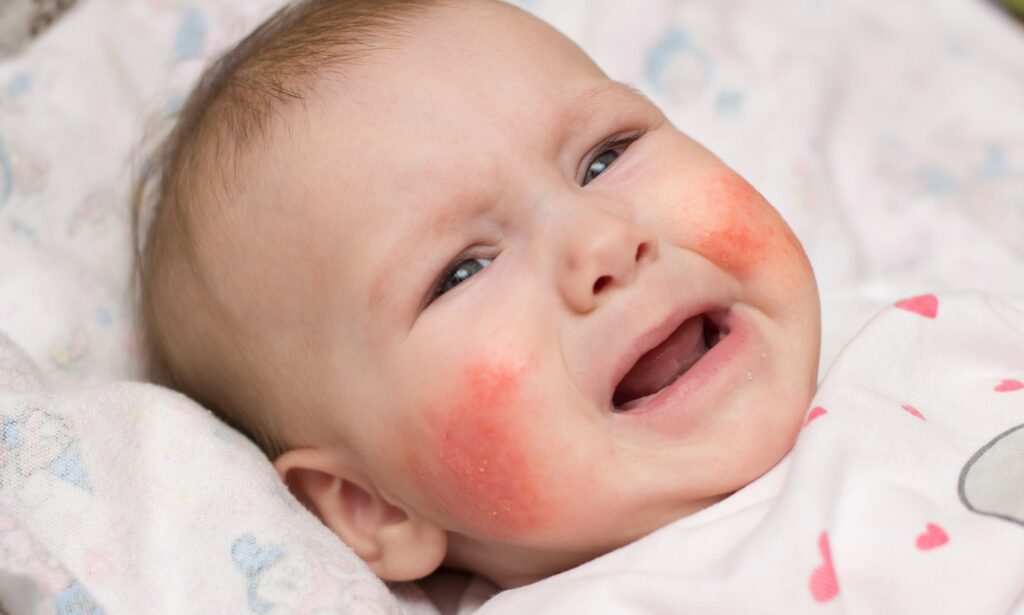
Another cause is infections. Some infections most viral and fungal can produce symptoms that are skin rashes. Viral infections like scabies result in a red rash all over the body. The rashes are usually characterized by red bumps, papules or vesicles. When due to infections can cause itching and may be accompanied by burning sensations among other symptoms.
The viral infections include chickenpox, measles (Rubeola virus), German measles (Rubella virus) and slapped cheek syndrome (Parvovirus B19)
Some of these infections cause distinct rashes on the areas of skin where eruptions occur.
Slapped cheek syndrome or fifth disease
Basically slapped cheek syndrome is a viral infection whose occurrence is more in young children below 10 years. A good percentage of adults are also affected.
The virus can be transmitted from an infected person to another healthy individual. If the mother parent has the virus it passes to the unborn.
Symptoms of slapped cheeks syndrome before the rash starts out to include a fever, feeling tired, runny nose and pain in joints. A sore throat, headache pain, and stomach upsets could be complaints. Thereafter, a bright red rash on the cheeks appears (approx. duration of 2 weeks to 3 weeks).
What more? To help identify it, a raised light pink rash may also appear on the chest, stomach, arms and thighs.
Shingles rash on face
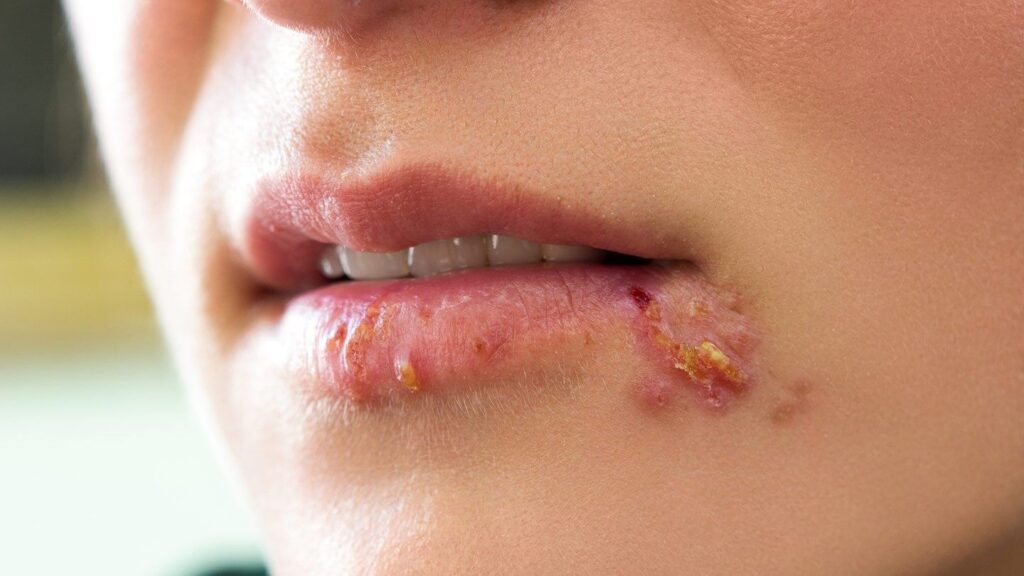
If you have chickenpox or have been diagnosed with or treated, there are chances that the virus (herpes zoster) remain in body nerves in its “dormant” state. If your immune system is activated the virus will cause shingles.
Tingling, superficial pain, itching are some of the signs that the virus has been activated. Some people with shingles will experience a deep pain and blisters on the affected body sides including on the trunk, arms, and legs.
Shingles can appear on one side of the face. It shingles deadly? For people with a weakened immune, shingles can be a serious health concern. Otherwise, healthy individuals suffer from the deep pain.
Impetigo
Impetigo – a bacterial infection – is symptomatic of red sores, blisters, itching (rash) and crusting. The contagious form of impetigo is common in children. It affects the skin around the nose and mouth.
After blistering, a red rash that causes itching is seen in children.
How is contagious impetigo transmitted or spread? More easily is by contact between the infected and healthy individuals. Secondly, there are various carries involved such as insects or animals that bite an infected person and then transfers the bacteria to the next person. There is the probability that sharing towels be another way of transmission.
There are other infectious conditions resulting to facial rashes.
- Severe Acute Respiratory Syndrome (SARS)
- Phenylketonuria in children
- Urticarial rash or hives
4. Lupus (SLE)

Lupus is any of the various lifelong immune diseases or disorders. According to HealthLine, systemic lupus Erythematosus also called Malar rash is the most common.
Symptoms of lupus include
- Formation of “butterfly” red or purplish rash on the face on either side of the nose
- Anemia due to problems with blood clotting
- The warm feeling and inflamed joints
- Joint pain or swelling – esp. wrists, hands, and the knees
Individuals diagnosed with SLE experience long-term symptoms such as hair loss, severe fatigue, anemia, joint pain and fingers turning white or blue. From statistics, SLE affects more childbearing-age women adults than men.
5. Rosacea
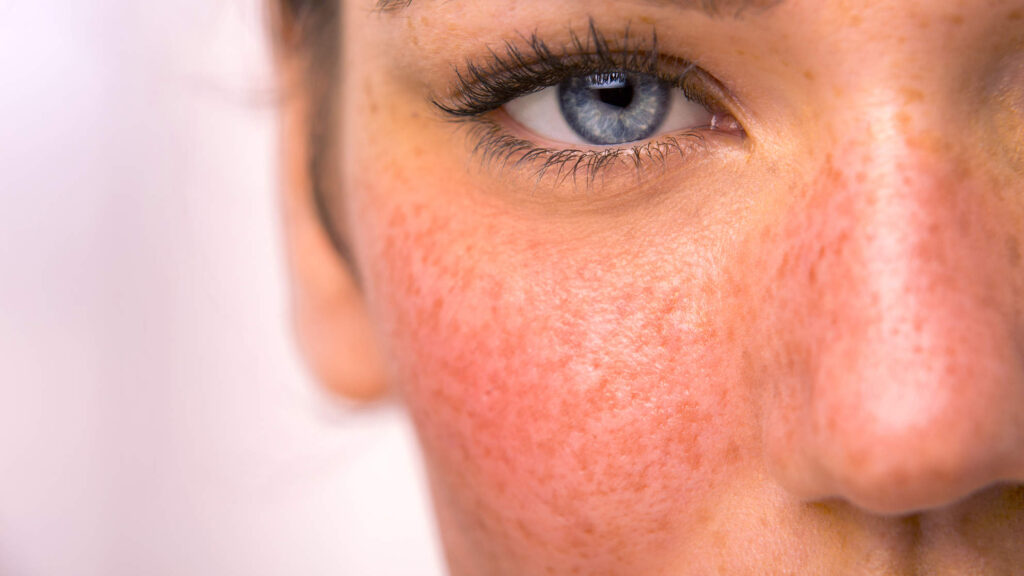
Rosacea is common among adults and typically begins after many middle-aged adults are above 30 years. It is a long-term and chronic disorder. It is symptomatic of flushing or red skin on the forehead, cheeks and nose. Sometimes parts of the chin become notable for redness.
According to the National Rosacea Society, patients who suffer from multiple skin disorders more than often confuse rosacea with the rest i.e. lupus, psoriasis, seborrheic dermatitis or acne. In fact, is more difficult to identify and treat.
Want more information? Read more about rosacea subtypes including available treatment methods.
Red rash on face
Red rash on the face can show up in different locations. It may also vary from one person to another such as.
- Small red areas of skin around mouth or sides of the nose. Chronic redness will persist in addition to other symptoms accompanied.
- Red bumps or blotches (itchy or non-itchy)
- Inflamed facial skin
- Burning lips
Itchy one
A rash characteristic of itching can be horrible if the eruptions occur particularly in young kids who cannot resist or control the urge to itching. Resorting to ways of stopping itchiness is the first aid for itch face rash. More importantly, know or try to understand what causes or results to that specific what you have
Do not give attempt medication for the itchy rash on the baby’s face because you think or heard someone else who took the same path.
Non-itchy or a rash that is not itch
What leads to non-itchy rash and what do you do to manage it that does not itch? Most rashes that do not itch are thought to be harmless to skin but could pose a problem if ignored or ultimately land you in danger.
Most rashes or anywhere on skin not causing itch, are related to allergic reactions from certain drugs and detergents. Some people may not be aware that the use of certain drugs is what results in the rashes (perhaps until they have completed their medication).
Facts about facial rashes you should know

Facial rashes whether they clear naturally or need treatment should be tendered with caution and extreme care. (More so those cases that involve a change in appearance, texture (dry, scaly, blistering, etc.) or quality of skin such as dermatitis.)
Face rashes can be a problem for anyone regardless of race, gender or age. Even though, babies are at higher risk of they common in both the babies and adults. Generally, more cases of face rashes in women than men are reported of allergic contact dermatitis than men.
One deniable truth is that the rashes will worsen if exposed to unfavorable conditions or with poor skincare. Therefore
- Avoid exposing your face or any of the affected areas to direct sunlight
- Avoid alcoholic containing ingredients in aftershaves, lotions or with fragrances
- Stop washing your face excessively or with hot water
- Avoid any other environmental triggers to cause further dryness of skin, irritation, etc.
- Stop hair shampooing, application of facial cosmetics
- Always strive to apply fragrance-free or pure moisturizers
How to treat them
How should a rash on face treatment be done? Does it need any kind of special skincare instead of medical treatment? Find out.
Treating and dealing with allergic contact dermatitis
Since allergic reactions develop, the best way to clear rashes due to contact dermatitis is to stop using the potential triggers or avoid touching or using or sharing with other people whose hypersensitivity is in the unknown.
Irritant contact dermatitis
The best way to treat this type of dermatitis is by identifying and removing potential irritants since most tests exclusively rely on allergic contact dermatitis.
Antibacterial washes

Gentle antibacterial washes will help control the easy spread of bacteria (staph) that causes impetigo. While washing the affected areas avoid scratching or scrubbing. Individuals with impetigo are encouraged to do cleansing but avoid using products that will further irritate or worsen their symptoms.
Vaccination
Vaccination reduces the risks of complications due to viral rashes (exanthemas) including chickenpox, shingles, and German measles.
Skincare as a treatment for facial rashes
Skincare is the generalized treatment of most skin conditions like psoriasis since there exists no specified treatment. We have already highlighted some of the special self-care features (see facts about a rash on the face above).
Natural remedies
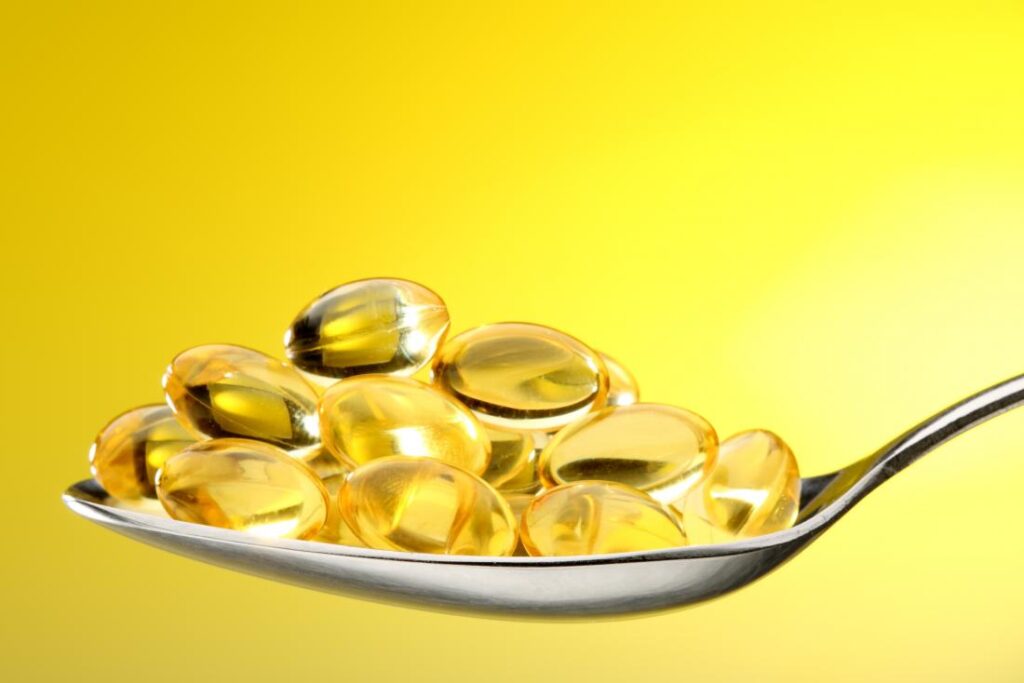
Do you have an itchy skin rash? If you reckon your problem or understand it is clearly a rash, then you need to go through these specific DIYs and see which will help you out in managing this skin condition.
- Oatmeal poultice
- Aloe Vera Gel
- Apple cider vinegar
- Vitamin E oils
- Cod liver oil
Natural oils like the vitamin E rich ingredients relief of inflammation and can help calm down symptoms like itching. Apply a small amount to the affected areas. Nonetheless, remedies require patience so you should be consistent.

